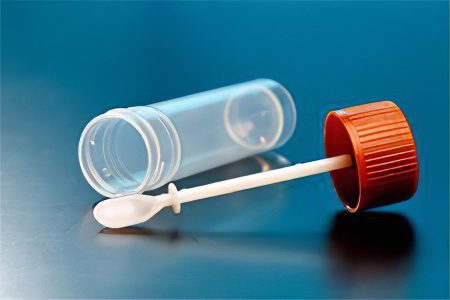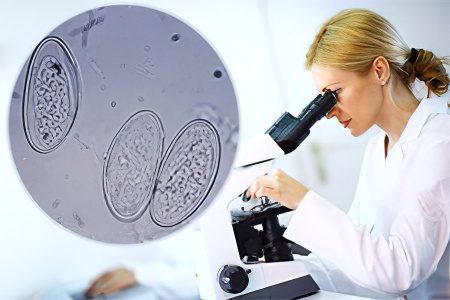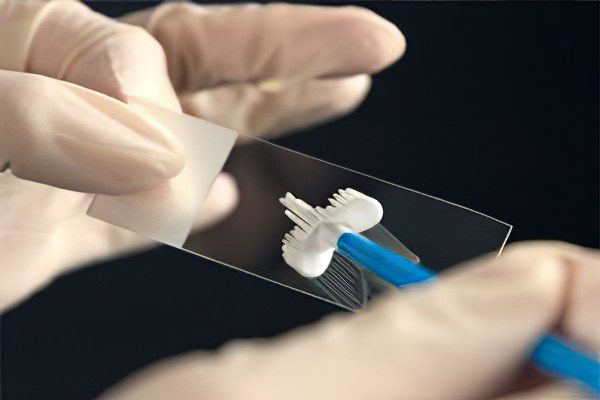Contents

Stool analysis for enterobiasis – This is a diagnostic test aimed at identifying adult pinworms or their eggs in human feces. It is enterobiasis that is the most common helminthic invasion throughout the world. The vast majority of patients are children, however, the adult population is also susceptible to enterobiasis. Around 460 million people are infected worldwide. In the general structure of helminthiases, enterobiasis accounts for up to 91% of invasions. Therefore, the analysis of feces for enterobiosis is one of the topical diagnostic studies, which makes it possible to identify helminthic invasion with a certain degree of probability.
Fecal microscopy for enterobiasis is the standard method of investigation for suspected parasitic infestation. It is prescribed to all children and adults who are suspected of being infected with pinworms. The presence of symptoms of enterobiasis is the basis for the appointment of an analysis. Therefore, a person should be alerted by the following health disorders: abdominal pain, allergic manifestations on the skin, anal itching, frequent urinary tract infections, enuresis in a child, increased fatigue, headaches, restless sleep. The symptoms of the disease will be especially pronounced in childhood. In adults, the severity of symptoms depends on the severity and duration of the invasion.
How is an analysis for enterobiasis taken?

In order to carry out the most accurate and correct diagnosis of fecal analysis for enterobiasis, it is important to limit yourself from errors when collecting biological material to be studied. The final result is influenced by such factors as: the speed of its delivery to the laboratory, the preliminary intake of drugs, compliance with the rules for collecting feces, the quality of work of laboratory assistants, the timing of laying eggs by pinworms.
Fecal analysis for enterobiasis should be taken several times, especially if there is a suspicion of helminthic invasion. The fact is that there is a high probability of falling into the so-called “silent period”, when the female pinworms are in the intestines and are waiting for the eggs to ripen. At this time, it is quite problematic to detect helminths or their eggs in feces.
In general, most doctors are inclined to believe that the analysis of feces for enterobiasis is uninformative, which is associated with the morphobiology of parasites of this species. After all, it is known for certain that they do not lay eggs in the intestinal lumen. For laying, the worms crawl out through the anus to the perianal folds. However, in some cases (about 30%), parasites or their eggs can be found in the feces (if they were washed off the perianal folds), and it is also possible to detect eggs of other helminths, for example, roundworms or tapeworms.
Before passing the analysis of feces for enterobiasis, it is necessary to prepare. To do this, you need to exclude the use of any rectal suppositories, do not do cleansing enemas, do not take antibiotics and laxatives. Otherwise, feces for analysis for enterobiasis will be unsuitable.
Fecal analysis for enterobiasis is taken as follows:
Fecal samples should be taken from different parts of the stool: from the side, from below, from the inside. Thus, it will be possible to increase the information content of the study. If suddenly a person independently saw parasites or parts of them in the feces, then it is imperative to put the detected material in a container that will be sent to the laboratory.
As for the volumes that need to be collected. The minimum volume is about two teaspoons. A smaller amount of feces will not allow you to obtain reliable information about helminthic invasion.
The container that is intended to collect feces must be impermeable and must have a tight lid. It is very convenient for this purpose to use special containers that are commercially available in pharmacies. As a rule, a spoon is included with the container, with which it is convenient to collect biomaterial. Although you can use a matchbox or a regular jar. The container does not need to be sterilized, it is enough to wash it well.
The sooner the samples are delivered to the laboratory, the more informative the result will be. However, the feces may not be entirely fresh; it can be stored under certain conditions throughout the day.
Care should be taken to ensure that foreign matter does not get into the container and onto the feces. In this case, we are talking about urine or vaginal discharge. Therefore, it is advisable to urinate before emptying the bowels. If at the time of the analysis a woman is menstruating, then a tampon should be used. Only then can you start collecting material.
When a baby’s stool is required for testing, it can be taken from a baby pot or from a diaper.
If it is not possible to send the container with the biomaterial to the laboratory immediately, then it should be tightly closed and refrigerated. There it can be stored at temperatures from 0 to +4 ° C for no more than 24 hours. If you violate the rules for storing feces, then this will negatively affect the interpretation of the data.
If possible, a morning portion of feces should be delivered to the study. It is important not to forget to sign the container before handing it over to the laboratory. You need to indicate not only your initials, but also the date the material was collected.
You should tune in in advance that you will need to take feces for enterobiasis about three times, and maybe even more (no more than five times).

If a person knows that he will not be able to deliver the feces to the laboratory for knocking, and there will be no opportunity to collect a new portion, then the biomaterial should be immediately collected in a special solution. For this, 70% ethyl alcohol is suitable, which can be purchased at a pharmacy by prescription. In addition, you can use a 50% solution of glycerin. To do this, glycerin must be mixed with distilled water (90 ml of water, 50 ml of glycerin). In the resulting composition, you can store feces for 2-3 weeks. One part of feces will require three parts of a preservative.
How much is an analysis for enterobiasis done?

An analysis for enterobiasis is done within a day. As a result, a person receives a form on which a conclusion will be written. Normally, worm eggs and pinworms should not be found in the feces. Nevertheless, it should be remembered that the information content of the method, especially with a single fecal donation, is very low and ranges from 30 to 50%. Therefore, it may be necessary to deliver the biomaterial to the laboratory several more times.
How valid is the analysis for enterobiasis?

The analysis for enterobiasis is valid for 10 days. That is, if a person has not presented a certificate at the place of demand during this time, he will need to donate feces for helminthic invasion again.
However, these terms do not mean that every 10 days it will be necessary to visit the clinic. In various institutions, a document on the absence of enterobiasis in a person is required at different intervals.
Preschool children attending kindergartens should donate feces for enterobiasis once a year. Additional testing may be required if the child has been absent from preschool for a long time.
If an adult person gets a job at an enterprise where a sanitary book is required, then he must pass an analysis for enterobiasis 2 times a year. Although it is possible that the internal charter of the enterprise will require more frequent delivery of biomaterial.
If a person regularly visits the pool, then he will also need to submit a certificate at least 2 times a year.
Be sure to perform an analysis for enterobiosis before issuing a voucher for spa treatment.
Naturally, if a person has symptoms of enterobiasis, then one should not wait for any time and consult a doctor as soon as possible for a quality diagnosis.









